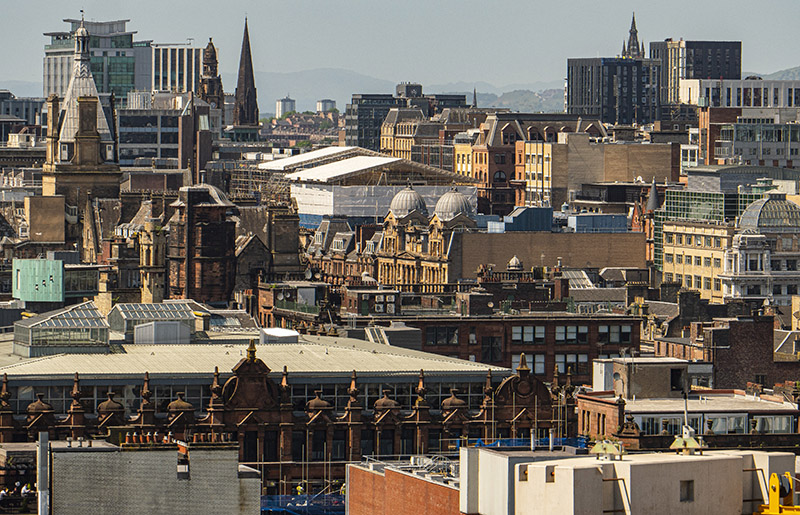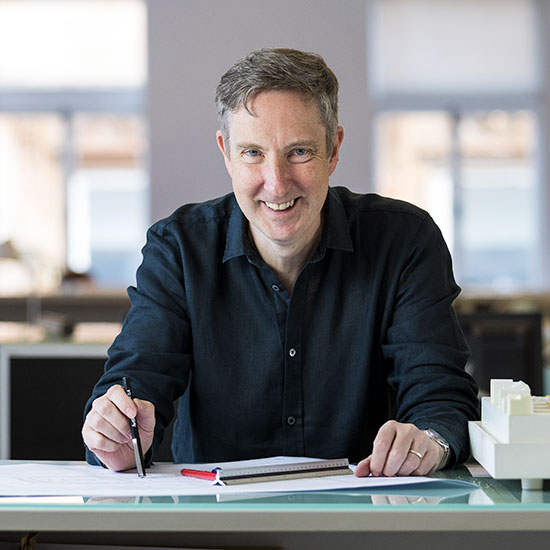
By Bruce Kennedy, an architect director at BDP
IN more than 30 years as a practicing architect in Glasgow, I have witnessed the city’s resilience in the face of external forces revolutionising the way we live.
As a child of the 1960s, I lived in a city that launched transatlantic liners, where steel making and engineering drove our economy, and where the soot of this heavy industry obscured an astonishing architectural legacy.
At the same time, the city was tearing itself apart in Comprehensive Development Areas that promised to modernise Glasgow with transport and social housing projects that turned their backs on Victorian tenements neglected by complacent landlords. Planners, architects and politicians promoted utopias derived from abstract visions of the future, not through engagement with the people who would live and work in this brave new world.
I’ve witnessed tenements make way for high-rise housing, that has itself been replaced by new tenemental buildings. Ironically, Victorian tenements that were spared the bulldozer remain highly sought-after homes for new generations of Glaswegians.
The trail of death and destruction left in the wake Hurricane Low Q in January 1968, highlighted the parlous neglect of our building stock, kick-starting investment that also washed the dirty face of Glasgow, revealing the hidden beauty of its sandstone buildings.
The 1970 and 80s saw pioneering architectural practices engage with a community-controlled housing association movement that has breathed new life into our built heritage, and that continues to regenerate neighbourhoods.
On graduating in the late 1980s, I was introduced to projects influenced and steered by residents’ committees before I joined BDP where I’ve worked for the last quarter century. Here was a firm that cut its teeth on regeneration when its Glasgow studio opened in 1969, and that continues to improve public sector housing alongside projects that provide homes for healthcare, leisure, culture, work and learning.
Globalism was an external force that tore-down Glasgow’s industrial infrastructure – but the city didn’t give-up. Just is it did when the American Revolution destroyed the tobacco trade, Glasgow reinvented itself. The council promoted collective events like the Glasgow Garden Festival and European City of Culture that challenged Glasgow’s ‘no mean city’ image and endowed its people with a re-found sense of pride.
And the city continues to reinvent itself today. Masterplans, to replace the monolithic retail centres that have anchored Buchanan Street for decades, will reinstate a familiar urban landscape of mixed-use buildings on open streets, extending and reconnecting the public realm.
But what else is changing? High street retailers face challenges from the rise of online shopping, accelerated through lockdown when all but essential shops closed. Similarly, enforced home working made the case for improved work-life balance, and many of us now benefit from hybrid working lifestyles. The pace of change is forcing landlords to consider new uses for commercial buildings, backed by planning policies that seek to double the city centre’s population, making it more vibrant, sustainable and self-sustaining.
We stand on the brink of a period of radical change for our cities as they are forced to adapt to lifestyles blending work and leisure. Rather than see this as a threat, we must embrace the opportunity to reimagine our cities as places offering safe, engaging, active public realm – the connective tissue linking home, work and leisure. Glasgow City Council hopes that its vision for Glasgow’s ‘Golden Z’– the arteries of Sauchiehall, Argyle and Buchanan Streets – will enable the city centre to attract investment that will support longer term economic, social and environmental resilience.
As designers, can we offer innovative solutions that reposition mono-functional work and retail buildings to generate a rich and varied urban environment founded on the legacy of Glasgow’s wonderful built heritage? We will design places with identity, memory and meaning that sustain and nurture every aspect of our lives, places that build on the strength of Glasgow and its people.











